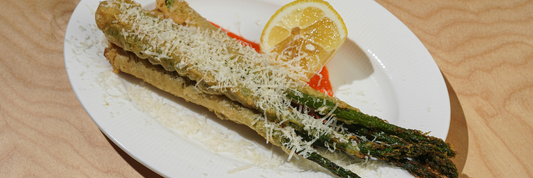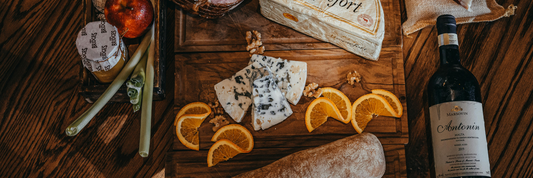Packaging is more than just a wrapper, it’s a silent salesperson, a freshness keeper, and a sustainability statement all in one. For snack brands, the choice of snack packaging materials can determine product shelf life, cost efficiency, and consumer perception. With so many options available from plastics and paper to compostable films and smart packaging making the right decision can feel overwhelming. This guide breaks down the pros, cons, and best uses of each packaging material so you can match your product needs with market trends, while balancing cost and eco impact.
- 7 Types Of Food Packaging Materials. Pros and Cons of Different Packaging Materials
- Food Packaging: What is it? The Role of Packaging in Food Preservation and Safety
- Top 10 Biodegradable Packaging Materials You Should Know
Key Packaging Requirements for Snacks
Choosing the right snack packaging materials means balancing protection, cost, and consumer appeal. Here are the essentials every brand should consider:
1. Barrier Protection
Snacks need strong defense against moisture, oxygen, light, and grease, which cause sogginess, rancidity, or flavor loss. Plastic films, foils, and laminated pouches provide the best protection, while paper often requires coatings to perform well.
2. Sealability & Safety
Secure seals and tamper-evident features prevent contamination, extend shelf life, and build consumer trust. Resealable zippers are especially valued for convenience and freshness.
3. Durability in Transit
From production to shelf, packaging must resist puncture, abrasion, and crushing. Flexible pouches are popular for being both lightweight and durable.
4. Weight & Flexibility
Lightweight packaging lowers shipping costs and improves shelf efficiency. Flexible snack bags often outperform rigid packaging for both cost and logistics.
5. Food Safety & Compliance
Snack packaging must meet FDA/EFSA food safety regulations to prevent chemical migration. Staying updated on compostable and biodegradable standards is also key.
6. Consumer Perception & Branding
Packaging is a marketing tool. Eco-friendly and visually appealing materials influence buying decisions over 60% of consumers prefer sustainable snack packaging.
Deep Dive: Pros, Cons & Best Uses (by Material)
Choosing between different snack packaging materials isn’t just about cost, it’s about balancing product protection, sustainability, and consumer perception. Below is a practical breakdown of each material type, with actionable insights on where they perform best.
Plastic / Synthetic Films
Plastic remains the workhorse of snack packaging due to its versatility and affordability.
-
Pros:
-
Strong barrier against oxygen and moisture, keeping snacks crisp.
-
High flexibility, works for pouches, wraps, or resealable bags.
-
Cost-effective at scale and widely available.
-
Printable surfaces enhance branding opportunities.
-
Strong barrier against oxygen and moisture, keeping snacks crisp.
-
Cons:
-
Significant environmental impact, most plastics are petroleum-based.
-
Recycling complications if multiple resins are laminated together.
-
Limited biodegradability, creating long-term waste.
-
Significant environmental impact, most plastics are petroleum-based.
Best For: Chips, dried snacks, powdered mixes, and products needing longer shelf life.
Tip: Brands are shifting toward mono-material plastics to improve recyclability without losing barrier strength.

Foil & Metallized Films
Foil and metallized films are prized for their superior barrier properties.
-
Pros:
-
Blocks light, gases, and moisture almost completely.
-
Extends product freshness and prevents flavor loss.
-
Creates a premium look for consumer appeal.
-
Blocks light, gases, and moisture almost completely.
-
Cons:
-
Higher production and conversion costs.
-
Difficult to recycle due to thin aluminum layers bonded to plastic.
-
Higher production and conversion costs.
Best For: High-sensitivity snacks like nuts, flavored crisps, vitamin-enriched products, and functional foods.
According to the Flexible Packaging Association, metallized films can extend shelf life by several months compared to standard plastics.

Paper & Paperboard
Paper-based packaging appeals to eco-conscious consumers and enhances tactile branding.
-
Pros:
-
Renewable and widely recyclable when uncoated.
-
Biodegradable in many formats.
-
Offers a natural, premium aesthetic that resonates with sustainable branding.
-
Renewable and widely recyclable when uncoated.
-
Cons:
-
Weaker barrier against grease, oxygen, and moisture.
-
Often needs coatings or plastic linings, which may hinder recyclability.
-
Weaker barrier against grease, oxygen, and moisture.
Best For: Low-fat dry snacks, granola bars, bakery treats, or as secondary/outer packaging like snack boxes and sleeves.
Water-based coatings are emerging as a sustainable alternative to plastic linings, offering barrier protection without compromising recyclability.

Compostable & Biodegradable Materials
Compostable packaging is a rising trend as consumers demand sustainable snack solutions.
-
Pros:
-
Strong eco-positioning aligns with sustainability pledges.
-
Designed to break down in composting conditions, reducing landfill impact.
-
Appeals to premium or niche markets that prioritize eco values.
-
Strong eco-positioning aligns with sustainability pledges.
-
Cons:
-
Higher costs compared to conventional plastics.
-
Lower barrier properties mean reduced shelf life.
-
Industrial composting infrastructure is limited in many regions.
-
Higher costs compared to conventional plastics.
Best For: Small-batch, premium snacks, organic products, or brands with eco-focused positioning.
A 2023 Euromonitor survey revealed over half of global consumers prefer brands with compostable packaging options.

Hybrid & Multilayer / Composite Materials
Multilayer packaging combines different materials to maximize performance.
-
Pros:
-
Leverages the best of each material: barrier strength, durability, and printability.
-
Lightweight compared to rigid packaging while still providing protection.
-
Customizable for highly sensitive snack applications.
-
Leverages the best of each material: barrier strength, durability, and printability.
-
Cons:
-
Nearly impossible to recycle due to bonded layers.
- Production costs are higher than single-material solutions.
- Increasingly scrutinized under new packaging regulations.
-
Nearly impossible to recycle due to bonded layers.
Best For: Chips, trail mixes, protein bars, and other snacks requiring extended shelf life or mixed environmental protection.
Recyclable multilayer innovations are emerging, but they remain costly and limited in adoption.
Barrier, Cost & Eco Impact Comparison of Snack Packaging Materials
When choosing snack packaging materials, businesses must weigh three critical factors: how well the material protects the product, how much it costs, and its environmental footprint. Each factor directly influences shelf life, brand positioning, and long-term profitability.
Barrier Performance: Protecting Freshness
Barrier properties are often the first priority because they determine how long a snack stays safe and appealing.
-
Plastic / Synthetic Films: Strong against oxygen and moisture, but may require laminates for light protection.
-
Foil & Metallized Films: Best-in-class barrier, blocks light, oxygen, moisture, and odors almost completely.
-
Paper & Paperboard: Naturally porous, with weak protection unless coated.
-
Compostable & Biodegradable Materials: Varies widely; many lack the oxygen and grease resistance needed for high-fat snacks.
-
Hybrid / Multilayer Materials: Combine strengths (e.g., plastic + foil) for maximum protection and long shelf life.
If your product is highly sensitive (chips, nuts, or protein powders), barrier strength should take priority over eco or cost considerations.
Cost Considerations: Balancing Budget & Value
Packaging can represent 10–30% of total product cost, so material choice directly impacts margins.
-
Plastic: The most cost-effective and scalable option, making it ideal for high-volume snack brands.
-
Foil & Metallized Films: Higher upfront costs but may reduce waste by extending shelf life.
-
Paper & Paperboard: Affordable for dry, low-fat snacks and effective for outer packaging.
-
Compostable & Biodegradable: Typically 20–40% more expensive than plastic; best suited for premium positioning.
-
Hybrid / Multilayer: Costly to produce, but justified when extended shelf stability prevents product loss.
For startups, paper or mono-material plastics often strike the best balance between affordability and brand impact.
Eco Impact: Meeting Sustainability Demands
Today’s consumers increasingly judge brands by their environmental responsibility. According to McKinsey (2023), over 60% of global shoppers are willing to pay more for sustainable packaging.
-
Plastic: Low eco performance due to landfill persistence and recycling challenges.
-
Foil & Metallized Films: Difficult to recycle, though they minimize food waste by extending shelf life.
-
Paper & Paperboard: Widely recyclable and biodegradable, but often loses eco-benefit if lined with plastic.
-
Compostable & Biodegradable: Strong sustainability positioning but dependent on local composting infrastructure.
-
Hybrid / Multilayer: Poor recyclability; environmental performance lags despite strong product protection.
If your target audience is eco-conscious, compostable or paper-based packaging can build trust and brand loyalty, even if it comes at a higher cost.
Quick Comparison Table
|
Material Type |
Barrier Protection |
Cost Level |
Eco Impact |
Best Use Case |
|
Plastic Films |
Strong vs. O₂ & moisture |
Low |
Weak (limited recyclability) |
Chips, dried snacks |
|
Foil / Metallized |
Excellent (light, gas, moisture) |
Medium-High |
Weak (hard to recycle) |
Sensitive products |
|
Paper & Paperboard |
Weak unless coated |
Low |
Strong (if uncoated) |
Dry snacks, outer packs |
|
Compostable / Biodegradable |
Moderate (varies) |
High |
Strong (eco-friendly) |
Premium eco snacks |
|
Hybrid / Multilayer |
Very strong |
High |
Weak (non-recyclable) |
Long shelf-life snacks |
Decision Framework: Which Material for Which Snack?
Choosing the right snack packaging materials is not a one-size-fits-all decision. The best choice depends on snack type, shelf life needs, production scale, and branding goals. Below is a framework to help brands map their products to the most suitable packaging.
Snack Type: Matching Materials to Products
Different snacks require different levels of barrier protection and durability.
-
Chips & Crisps
-
Best fit: Plastic films or foil laminates
-
Why: Chips are highly sensitive to oxygen and moisture, which quickly cause staleness. Foil or metallized films provide the strongest defense.
-
Best fit: Plastic films or foil laminates
-
Granola Bars & Baked Snacks
-
Best fit: Plastic wrappers or compostable films
-
Why: Moderate barrier is sufficient, but flexibility and portability are key. Compostable wrappers appeal to eco-conscious consumers.
-
Best fit: Plastic wrappers or compostable films
-
Nuts & Seeds
-
Best fit: Foil or multilayer composites
-
Why: High fat content makes them vulnerable to rancidity. Strong oxygen and light barriers are essential for freshness.
-
Best fit: Foil or multilayer composites
-
Powders & Seasoning Mixes
-
Best fit: Foil pouches, multilayer packaging
-
Why: Powders clump when exposed to humidity. Foil or multilayer films prevent moisture absorption and extend shelf life.
-
Best fit: Foil pouches, multilayer packaging
Tip: Always consider product sensitivity first, snacks with oils or powders need maximum protection, while dry and low-fat snacks can use lighter paper-based packaging.
Shelf Life: Long-Term vs. Fresh Snacks
-
Long Shelf Life (6–12 months)
-
Materials: Foil, metallized films, or multilayer composites
-
Examples: Chips, nuts, protein powders
-
Benefit: Extends freshness and reduces product loss, even under challenging storage conditions.
-
Materials: Foil, metallized films, or multilayer composites
-
Short Shelf Life (up to 3 months)
-
Materials: Paperboard boxes, compostable films, or lightweight plastics
-
Examples: Granola bars, fresh bakery snacks
-
Benefit: Lower cost, easier recyclability, and stronger eco-branding appeal.
-
Materials: Paperboard boxes, compostable films, or lightweight plastics
Business Scale: Small Batch vs. Mass Production
-
Small Batch / Artisanal Brands
-
Best fit: Paper or compostable packaging
-
Why: Lower volumes allow for premium branding and eco-focused storytelling. Consumers expect craft-style presentation.
-
Best fit: Paper or compostable packaging
-
Mass Production / Large Brands
-
Best fit: Plastic films or multilayer composites
-
Why: Consistency, scalability, and cost-efficiency are critical. Industrial sealing and high-volume automation require durable, reliable packaging.
-
Best fit: Plastic films or multilayer composites
Branding: Premium vs. Mass-Market Positioning
Packaging is also a marketing tool, shaping how consumers perceive value.
-
Premium / Eco-Driven Brands
-
Materials: Compostable films, uncoated paperboard, or biodegradable pouches
-
Impact: Aligns with consumer demand for sustainable packaging and supports premium pricing.
-
Materials: Compostable films, uncoated paperboard, or biodegradable pouches
-
Mass-Market / Value Brands
-
Materials: Plastic films, foil laminates
-
Impact: Delivers affordability and durability, ensuring competitive shelf presence in supermarkets.
-
Materials: Plastic films, foil laminates

Innovations & Emerging Trends in Snack Packaging Materials
The landscape of snack packaging materials is evolving quickly as brands seek solutions that balance shelf life, cost, and sustainability. Here are the key innovations shaping the future:
1. Bio-Based Plastics (PLA, PBAT)
Made from renewable resources, bio-based plastics reduce reliance on fossil fuels and lower carbon footprint. While they’re compostable under industrial conditions, brands must educate consumers on proper disposal.
2. Edible & Dissolvable Films
Edible packaging offers zero-waste convenience, while dissolvable films are gaining traction for single-serve snacks. Though still niche, they showcase how functionality and sustainability can merge.
3. Monomaterial Recyclable Films
Replacing multi-layer laminates, monomaterial films simplify recycling without sacrificing barrier properties. This trend addresses growing demand for packaging that’s both protective and easy to recycle.
4. Smart & Active Packaging
Technologies like oxygen scavengers extend freshness by slowing spoilage. Smart labels that track freshness or temperature add transparency and help reduce food waste, especially relevant for perishable snack foods.
5. Recyclable Multi-Layer Designs
Traditional laminates are hard to recycle, but new recyclable multi-layer designs offer durability and product protection while improving compatibility with recycling streams.
FAQ About Snack Packaging Materials
What is the best material for snack packaging?
The “best” material depends on your product’s needs. Plastic films (like PET or PP) offer excellent moisture and oxygen barriers, extending shelf life. Paper-based packaging is eco-friendly and cost-effective for dry snacks, while compostable films (PLA, PBAT) appeal to sustainability-conscious consumers. The right choice balances product protection, cost, and brand values.
Can biodegradable packaging protect against moisture like plastic?
Biodegradable packaging has improved significantly, but it generally provides lower moisture and oxygen resistance compared to traditional plastics. New blends of bio-based coatings and films are closing this gap, making them increasingly suitable for snacks with moderate shelf-life requirements.
How much more expensive is compostable packaging?
On average, compostable packaging costs 20–40% more than conventional plastics due to raw material sourcing and limited production scale. However, many brands justify the higher price as an investment in sustainability marketing and long-term consumer trust. Costs are expected to decrease as demand and production capacity grow.
Is food-grade paper safe for oily snacks?
Yes, but only with the right treatment. Standard food-grade paper alone may not withstand grease. Adding compostable coatings (like water-based or bio-based barriers) improves resistance, making paper bags safe for oily or fried snacks without leaking.
Can multilayer films be recycled?
Traditional multilayer films (plastic-plastic or paper-plastic laminates) are difficult to recycle because separating layers requires specialized facilities. However, monomaterial films and new recyclable multi-layer designs are emerging to solve this challenge, helping brands meet recycling goals while maintaining barrier performance.
Do consumers accept compostable packaging?
Yes. Studies show that over 60% of consumers prefer sustainable packaging when given a choice, even if it costs slightly more. Acceptance is highest among younger demographics and eco-conscious markets. The key is clear labeling (e.g., “compostable at home” vs. “industrial compost only”) to avoid confusion and build trust.
Conclusion
Choosing the right snack packaging material isn’t about following trends, it’s about aligning your product requirements with consumer expectations and environmental responsibilities. Whether you’re a small-batch producer experimenting with eco-friendly paper bags, or a large-scale manufacturer relying on high-barrier films, the decision comes down to protection, cost, and brand positioning. With new innovations like compostable films, recyclable mono-materials, and smart packaging, the future of snack packaging is moving toward sustainability without compromising performance. The key is to stay informed and select the packaging that not only safeguards your snacks but also resonates with your target audience.




